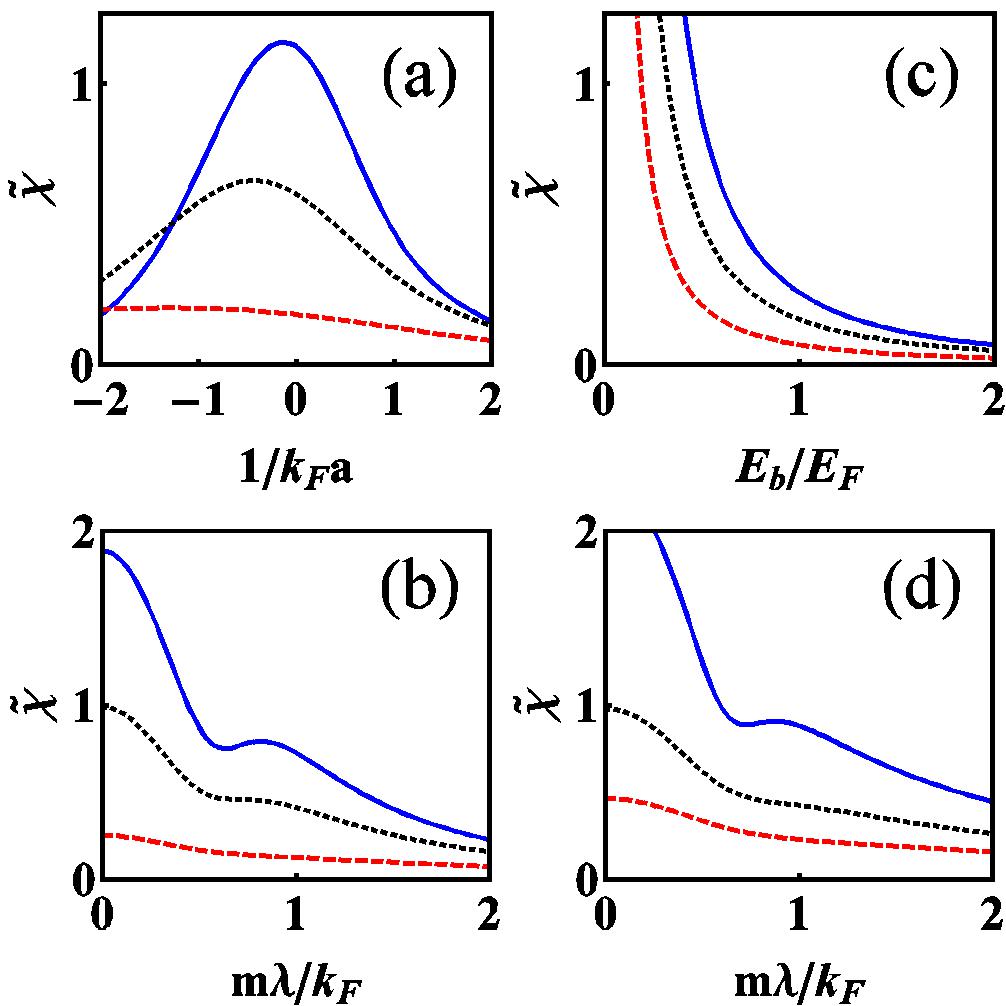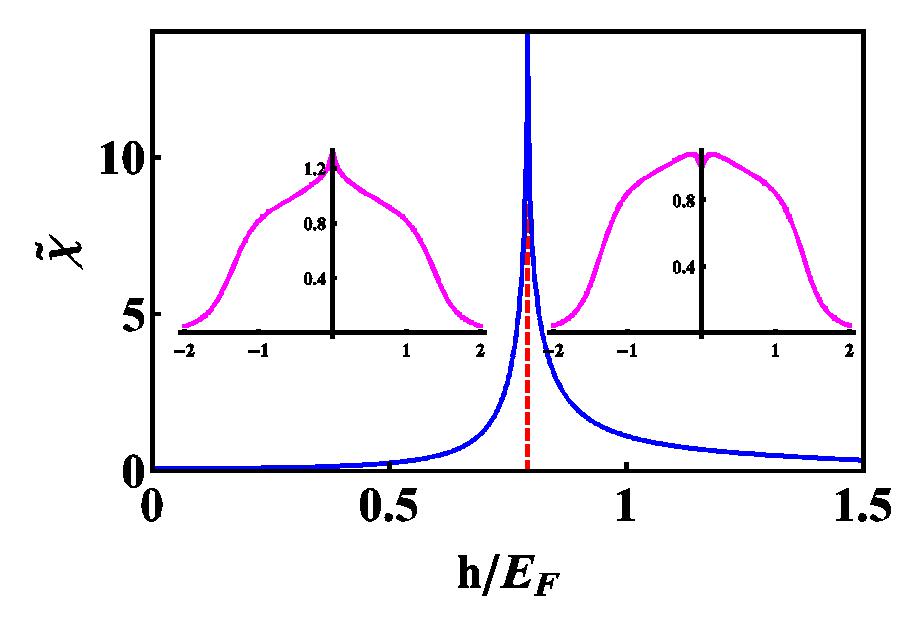
Fidelity and topological quantum phase transition of a spin-orbit coupled Fermi superfluid system |
|
Ground state properties of a spin-orbit coupled Fermi superfluid system are investigated systematically. In the absence of Zeeman field, we obtained the fidelity susceptibility which is a direct measure of the change of the ground-state wave-function. The results show that Fidelity susceptibility is a powerful tool to characterize the crossover from weak coupling BCS limit to strongly correlated BEC limit. Furthermore, we considered the more interesting case where topological phase transition emerges due to the combined effect of spin-orbit coupling and Zeeman field. Using Bogoliubov transformations, we obtained the BCS-type ground-state wave-function. Surprisingly, we found that the ground-state wave-function has a p-wave component which is directly related to the topological phase transition. Albeit its simplicity, the numerical value of the topological invariant used to characterize this topological phase transition can only be obtained through numerical calculations. We found that it can actually be obtained analytically with the help of the Berry curvature of the ground-state wave-function. Its physical implications are discussed in length.
FIG. 1.Fidelity susceptibility (in arbitrary dimension)as functions of interaction parameters and strength of SOC in (a)and (b) three dimensions and (c) and (d) two dimensions. In (a) and (c), ¦Ë are given as 0, 1, and 2 for the solid blue line, black dotted line, and red dashed line, respectively. The interaction parameters are set to be ¦Ç= 1/(kFa) = ?1.2,?1,?0.6 in (b) and ¦Ç= Eb/EF = 0.2,0.8,2.2 in (d) for lines from above.
FIG: Fidelity susceptibility (in arbitrary dimension)as functions of Zeeman field with Eb/EF= 0.5 and m¦Ë/kF=1. The vertical red dashed line denotes the critical Zeeman field hc= 0.792. The two inserted figures correspond to the momentum distribution of the total particle numbers as a functionof px with py= 0.
|
|

